
Living with the guilt of an aborted child changed the direction of Jeff's life
Lisa Bast
·
Late-term abortionists and industry insiders admit to the dangers of induction abortion
According to testimony from abortion providers, outpatient abortion facilities are likely ill-equipped (compared to hospitals) to handle life threatening complications that may occur during induction abortions committed later in pregnancy.
In the third installment of this Live Action News late-term abortion series, Live Action News documents testimony from abortion providers stating that the standard of care for later abortions is that they be committed in a hospital or hospital-like facility.
Multiple abortion industry insiders have been clear in stating that late-term induction abortions typically take days to complete and should be done in hospitals instead of clinics.
This even includes the American College of Obstetricians and Gynecologists.
Experts in the field of late-term abortion have testified under oath that they know induction procedures should be committed in hospitals. Live Action News, with the help of Mike Seibel, gathered more information.
Filed in June 2022, abortionist David Turok, then-Director of Surgical Services at Planned Parenthood Association of Utah, stated in the suit:
Induction abortion… has a higher complication rate than D&E. Unlike other forms of abortion, induction abortion is usually performed in hospitals.
This case was filed in 2019 against Ohio AG Dave Yost.
Late-term abortionist Lisa Keder, then-Professor and Vice Chair of the Ohio State University Wexner Medical Center’s Department of Obstetrics and Gynecology and Division Director for General OB/GYN, was cited multiple times in the case. She claimed:
Induction abortions must also be performed at a facility that can admit patients for an extended stay, such as a hospital or hospital like facility, and the length of the procedure can vary from 8 hours up to several days.
“Up to 33% of women who undergo induction abortions have a retained placenta and require surgery,” the lawsuit added.
In addition to Keder, the lawsuit sourced Planned Parenthood late-term abortionist Mark Nichols (Director Emeritus of the Family Planning Fellowship and a professor at the Oregon Health and Science University — OHSU — in Portland, Oregon) also cited in Yost.
The lawsuit read:
Other than D&E, the only abortion methods available after 15 weeks LMP are induction abortion and hysterotomy; the latter is similar to a Caesarian-section procedure….
Both procedures are rare and available only in a hospital setting…Furthermore, induction abortions are much riskier than D&E procedures….They require a woman to go through labor and delivery, and thus must be performed in an inpatient setting.
Additionally, the lawsuit footnoted Keder and Nichols, writing:
They take at least eight hours and may take up to several days to complete…Up to 33% of women who undergo induction abortions have a retained placenta and require surgery…Other risks include infection…cervical bleeding, failure to fully pass the pregnancy, and hemorrhage… Because they are performed in hospital settings, induction procedures are far more expensive than clinic-based D&E abortions.
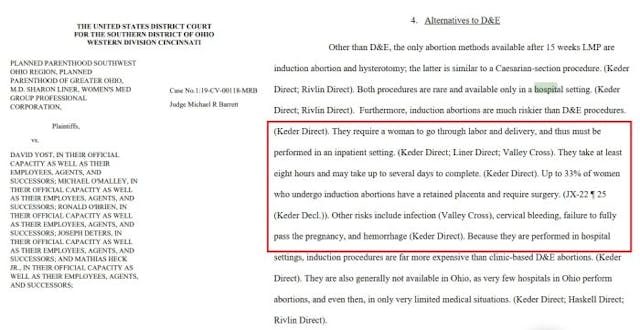
“Potassium chloride is dangerous to the woman, so it is imperative that the target (a small fetal heart or thorax) not be missed. Accordingly, the administration of potassium chloride is a precise procedure requiring that a maternal fetal medicine specialist use advanced ultrasound technology that exists only in hospitals,” the legal document also states.
Nichols was also cited in this 2021 case. In his declarations, Nichols, a former medical director at Planned Parenthood, wrote similarly to his declaration in Yost:
Unlike D&E, which is a quick procedure that can in most cases be scheduled as an out-patient procedure, inductions must occur in a hospital or similar facility; can take anywhere from 8 to 36 hours, sometimes longer; and entail the process of labor, which can involve pain requiring significant medication or anesthesia, and which may be psychologically challenging for some women, especially those ending a pregnancy after learning of a devastating fetal diagnosis, as inductions are often done in the labor and delivery area.
In addition, there is an enormous cost difference between an in-patient procedure requiring up to three days of hospitalization and an out-patient procedure.
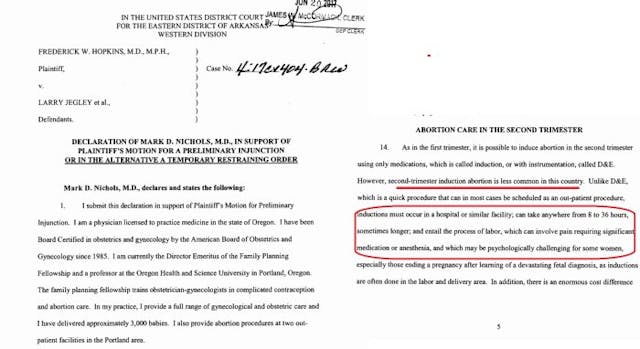
Nichols went on to state:
Far less common than injections of digoxin, injections of potassium chloride, or KCl, are an option for only a small number of physicians in hospital settings. Such an injection must be directly into the fetal heart, both to be effective in causing demise and to be safe for the woman.
It will cause immediate fetal demise, but it requires an extremely high skill level, typically limited to Maternal-Fetal Medicine sub-specialists after a specialized fellowship with extensive and lengthy advanced training…
Like digoxin, it carries risks of infection. Additionally, the magnification required to inject KCl safely requires an advanced ultrasound machine that is typically available only in a hospital setting and would be too expensive for most clinics to afford.
“Because induction involves an in-patient stay, requiring up to three days of hospitalization, as opposed to an out-patient procedure, there is an enormous cost difference between induction and the out-patient D&E procedure,” the court document stated.

Granting a preliminary injunction, the order in the case stated that “induction involves an in-patient stay, requiring up to three days of hospitalization” which “can involve pain requiring significant medication or anesthesia” and “can happen only in a hospital or hospital-like facility.”
It also noted:
In some women, an induction abortion fails, and the woman needs intervention in the form of D&E for her safety…
In approximately 5% to 10% of induction abortions, the woman must undergo an additional surgical procedure to remove a retained placenta.
Induction abortion also can cause uterine rupture, which is rare but can be life threatening and can be of particular concern for women who have had multiple previous cesarean deliveries.
In their 2017 brief, Herbert C. Hodes, M.D., and Traci Lynn Nauser, M.D., wrote about “labor induction or demise by injection or umbilical cord transection,” stating that “the evidence established that labor induction, used for only 2% of second-trimester procedures, requires women to go through both the physical and emotional pain of labor, requires hospitalization lasting up to three days, and carries a higher risk of infection than the D&E procedure.”
Hodes and Nauser — father and daughter and both ACOG members — committed first- and second-trimester abortions in Kansas while operating the Center for Women’s Health abortion facility.
The State did not dispute “the plaintiffs’ assertions that it is not medically recommended for some women, that it includes an increased risk of infection, and that it requires a hospital stay of anywhere from 5 hours to 3 days. Of course, the woman also must go through labor” (emphasis added).
In this case, ACOG argued that “While there may be some cases in which a physician determines that either induction or fetal demise is in the best interest of a patient given that patient’s circumstances or the nature of that physician’s practice, for many women, these procedures could present greater risks than a D&E procedure or could be less effective.”
In their amicus brief in this 2006 case, the pro-abortion American College of Obstetricians and Gynecologists (ACOG) wrote:
Other than D&E, almost all other induced abortions after the first trimester are performed by the method known as induction. In an induction abortion, the physician induces pre-term labor with potent medications, the cervix dilates, and the fetus is generally expelled through the labor process.
The procedure requires constant monitoring and must be performed in a hospital. An induction lasts anywhere from fewer than twelve hours to more than forty-eight hours.
This 2019 lawsuit cited ACOG’s Practice Bulletin No. 135 at 26, which claimed that “Induction abortion ‘may take 2–3 days to occur, during which time the woman has to be hospitalized as an inpatient. Moreover, the woman has to go through labor, which may involve hours of pain requiring significant medication or anesthesia,’” adding that “An induction abortion may cost more than $20,000….”
“In Dr. Bernard’s experience, ‘following an induction a significant percentage of women have a retained placenta and must undergo an additional surgical procedure to have it removed,’” the lawsuit added.
In a brief filed in before the 5th Circuit in this 2021 case, ACOG footnoted the following risks:
Although medical induction is generally safe, it does involve risks and side effects that D&E does not.
For example, medical induction carries a risk of uterine rupture, a rare but potentially life-threatening condition that is more likely to occur in women who have had multiple previous cesarean deliveries. ACOG, supra note 5, at 1397.
Additionally, approximately five to ten percent of procedures result in retained placenta, a condition which can cause hemorrhaging and requires a surgical intervention.
ACOG later added, “Because of the complications associated with labor, medical induction occurs in a hospital or hospital-like facility, rather than an outpatient clinic.”
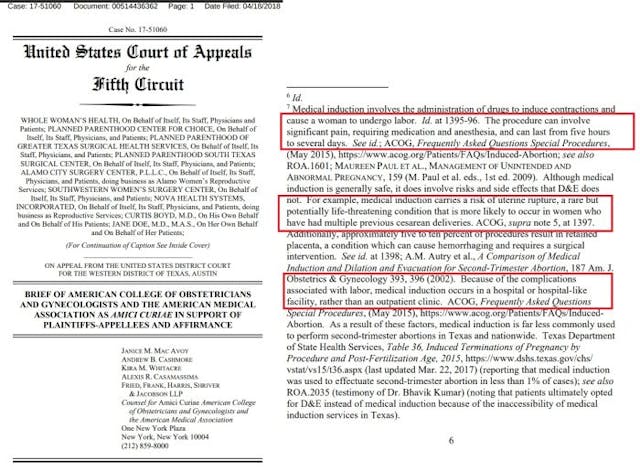
In an induction abortion, which can be committed “for any particular reason,” the preborn child is injected with a feticide (often digoxin or potassium chloride) — either into the amniotic fluid, the head, or the heart — to induce cardiac arrest and death. The woman’s cervix is gradually dilated and she eventually gives birth to a stillborn baby. This procedure is typically used for a preborn child at 25 weeks gestation and later — well past the time a preborn child can survive outside the womb with medical assistance.

Medical malpractice attorney Mike Seibel previously told Live Action News that risks increase by gestation for women seeking later abortions, pointing out that experts within the abortion industry have testified that the ‘standard of care’ for late induction abortions are that they be committed in hospitals, not in freestanding abortion facilities, for the safety of pregnant women (while the life of the baby targeted for death is completely disregarded).
Yet, as Live Action News has previously documented in part two of this series, freestanding abortion facilities advertise that they will commit induction abortions (see images below):
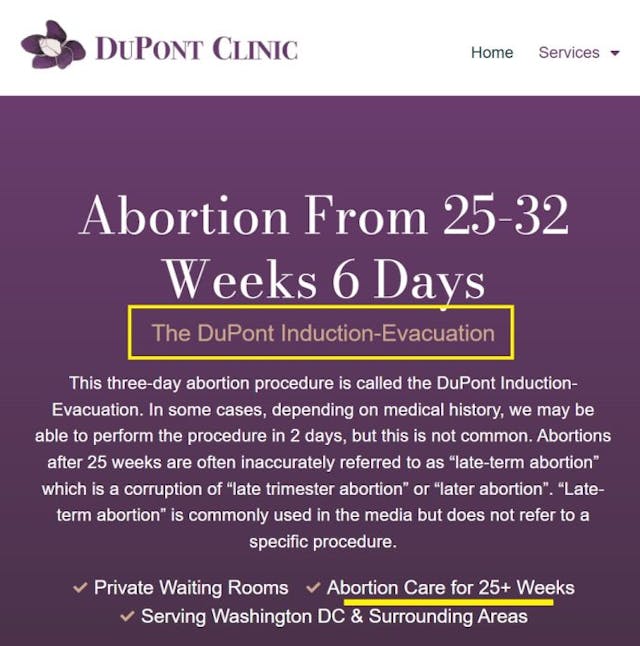
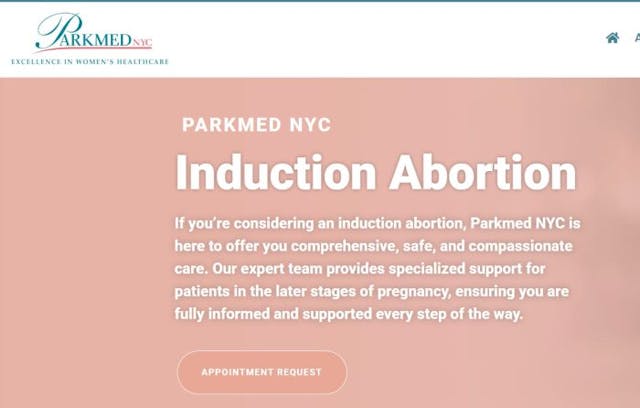
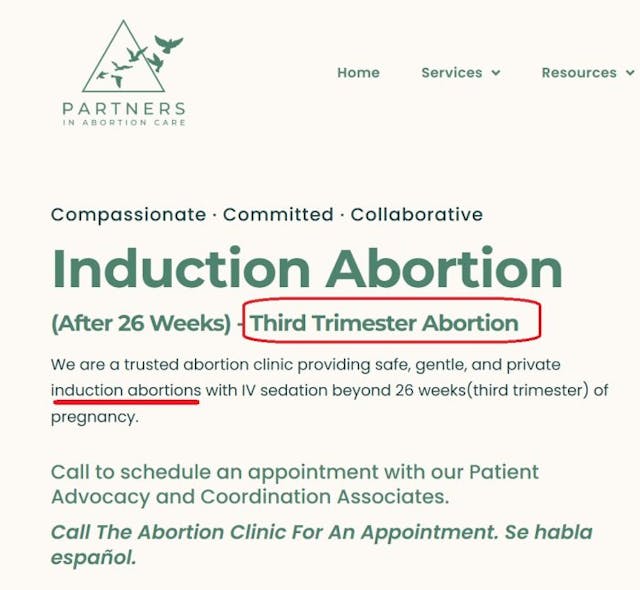
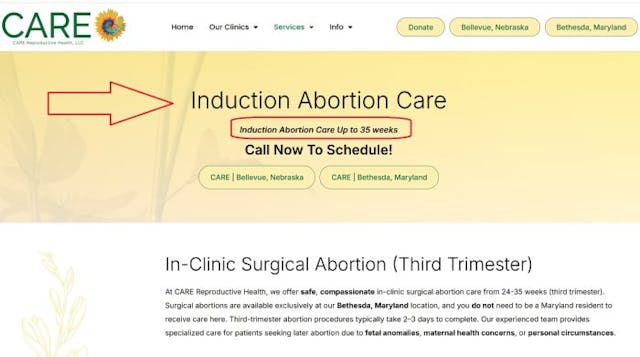
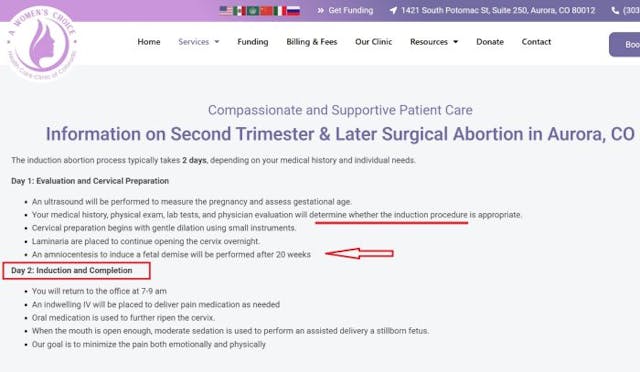
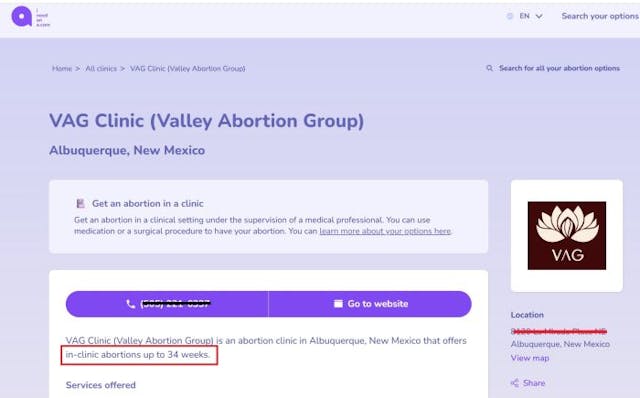
Follow Live Action News on Facebook and Instagram for more pro-life news.
Live Action News is pro-life news and commentary from a pro-life perspective.
Contact editor@liveaction.org for questions, corrections, or if you are seeking permission to reprint any Live Action News content.
Guest Articles: To submit a guest article to Live Action News, email editor@liveaction.org with an attached Word document of 800-1000 words. Please also attach any photos relevant to your submission if applicable. If your submission is accepted for publication, you will be notified within three weeks. Guest articles are not compensated (see our Open License Agreement). Thank you for your interest in Live Action News!

Lisa Bast
·
Analysis
Nancy Flanders
·
Analysis
Nancy Flanders
·
Analysis
Cassy Cooke
·
Analysis
Carole Novielli
·
Analysis
Nancy Flanders
·
Analysis
Carole Novielli
·
Investigative
Carole Novielli
·
Abortion Pill
Carole Novielli
·
Abortion Pill
Carole Novielli
·
Investigative
Carole Novielli
·